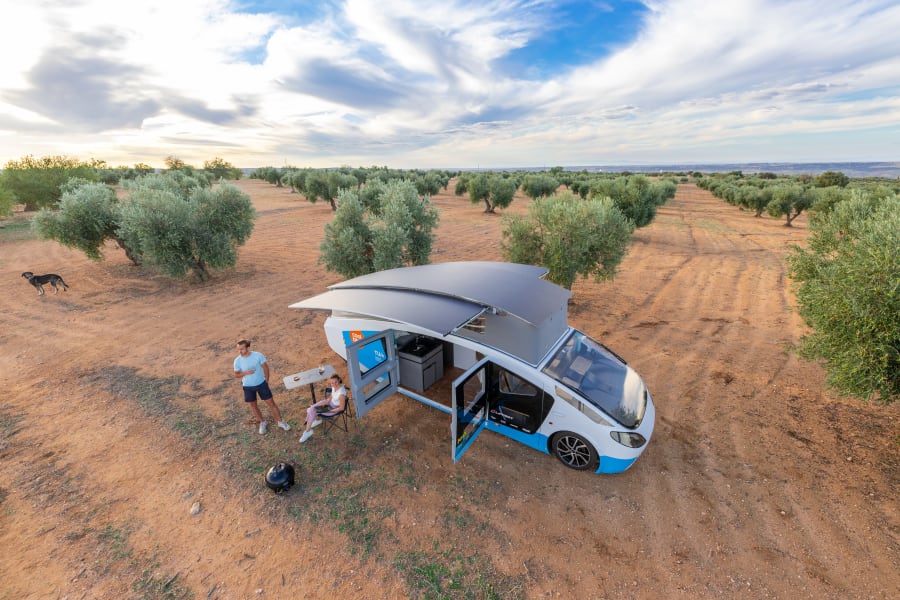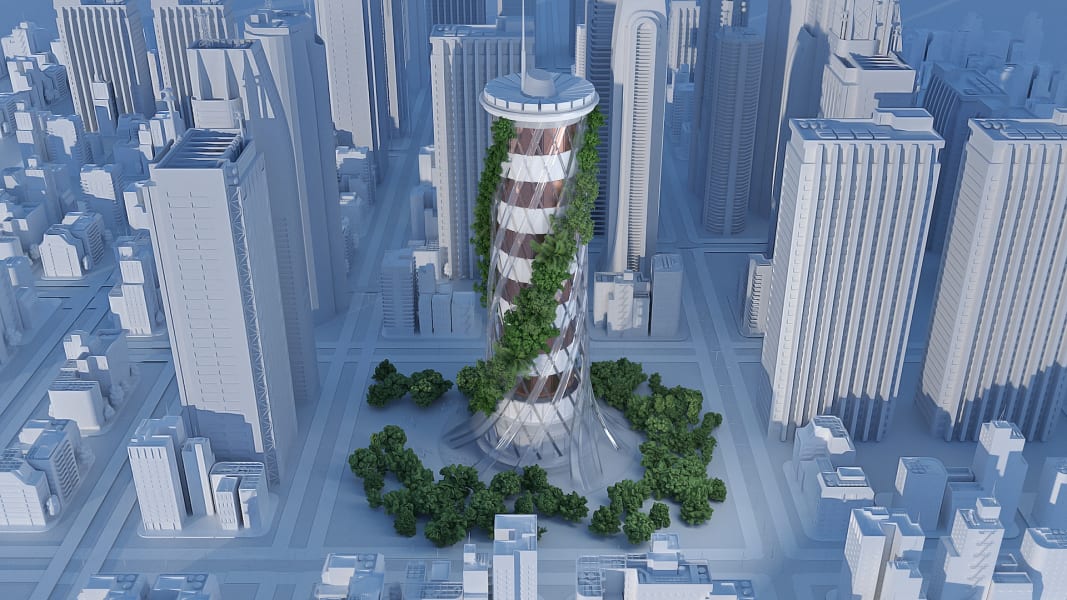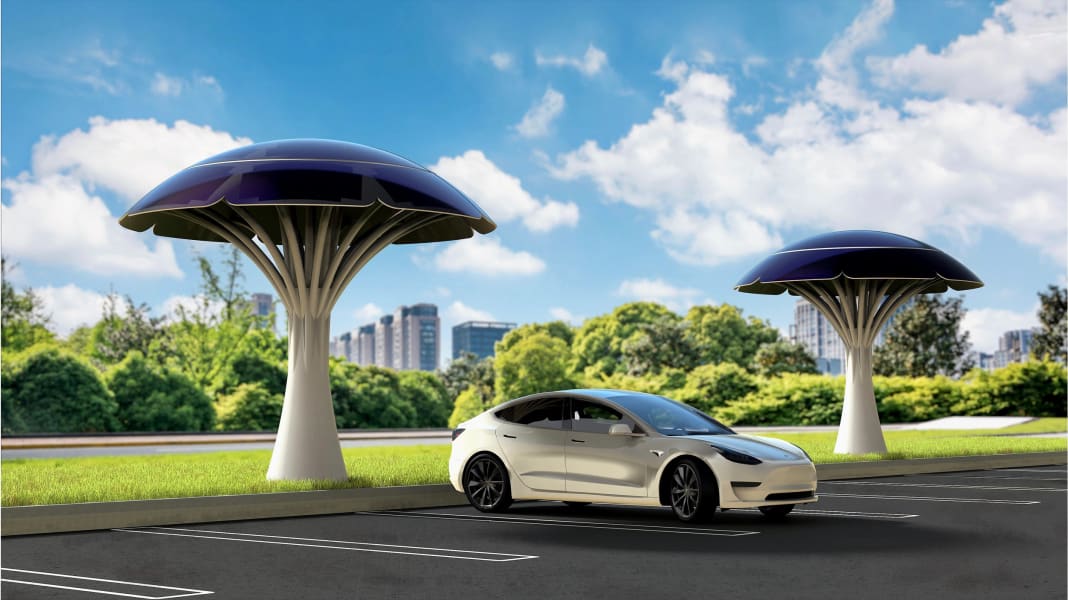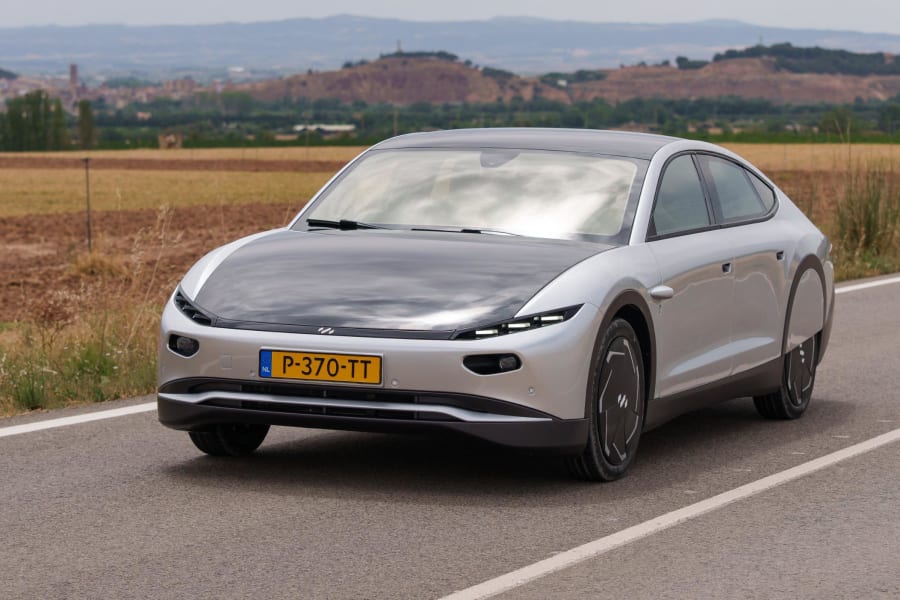Share
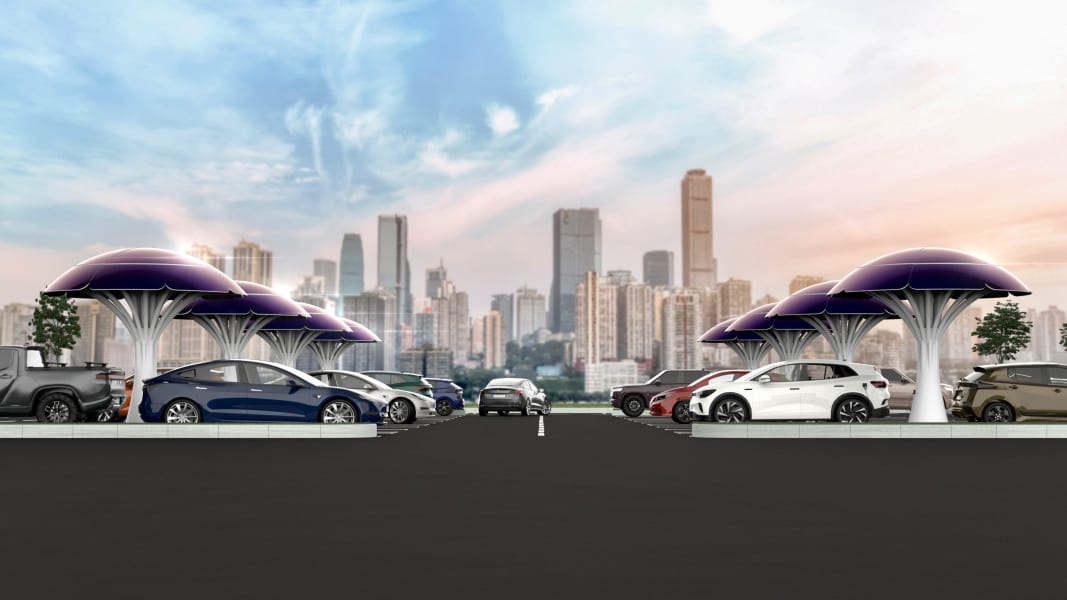

1 of 8
"Solar trees," with a 7-meter-wide canopy and leaves made of nano photovoltaics, may soon be coming to car parks in the UK. Scroll through the gallery to learn more. SolarBotanic Trees Ltd
The concept, developed by British startup SolarBotanic Trees and shown here in a rendering, aims to provide an aesthetically pleasing and green solution for charging electric vehicles. It is one of many solar solutions across cities and towns aimed to help the energy transition from fossil fuels to renewables. SolarBotanic Trees Ltd
Adding solar panels to car parks is increasingly common, but usually they come in the form of solar carports, which stretch over parking spaces and provide both shelter and power. In 2020, DisneyLand Paris began construction on a solar canopy plant covering its guest parking lot. When completed it will be one of the largest examples in Europe, covering 20 hectares and generating enough energy to account for about 17% of the resort's current electricity consumption. Alain Jocard/AFP/Getty Images
These gigantic "energy trees" were unveiled at the Sustainability Pavilion at Dubai Expo 2020. Like sunflowers, the trees rotate to follow the sun's rays throughout the day, and the energy generated is used to power the building's cooling systems, as well as for water harvesting and recycling. Karim Sahib/AFP/Getty Images
The sun can also be used to power electric vehicles as they drive. The Lightyear 0, production of which began in 2022, has curved solar panels in its roof, hood and trunk that top up the electric battery as it drives. Cesar Manso/AFP/Getty Images
Solar panels were also fitted on the "Stella Vita" campervan, which is powered entirely by the sun. Created by students at the Eindhoven University of Technology, in the Netherlands, in 2021 it drove almost 2,000 kilometers (1,242 miles) across Europe without stopping for fuel or plugging in to charge. Rien Boonstoppel/STE
In some cities, architects are using solar technology to create buildings that aim to generate more energy than consume. Deloitte's headquarters in Amsterdam has solar panels on the south side of the building, which provide energy for heating and cooling installations as well as powering the laptops and smartphones of employees. Shutterstock
Scientists are also developing a more efficient form of solar cell technology, made from a group of materials called perovskites. Their flexibility and light weight means they could be easily wrapped around buildings, providing solar energy, as shown in this rendering. courtesy Saule Technologies
